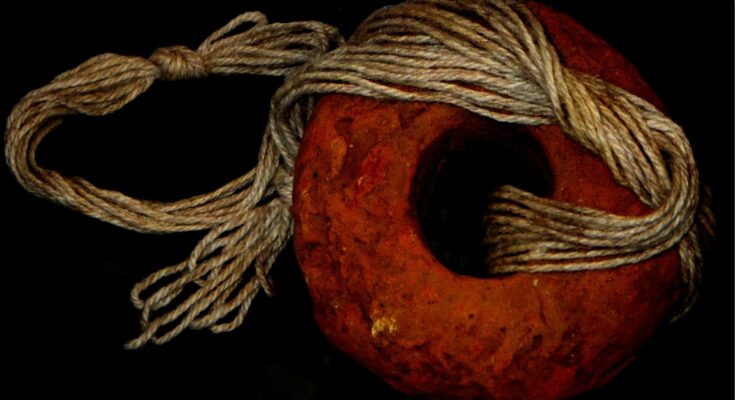The earliest known example of red-dyed textiles made using insects in Israel has been discovered through an archaeological collaboration between Israel Antiquities Authority (IAA), Bar-Ilan University, and the Hebrew University of Jerusalem.
The thread of textile was uncovered in a cave in the Judean Desert, having been dyed using Kermes oak insects, cited in the biblical text as the “Tola’at Hashani” (scarlet worm).
The ancient practice of insect dye in Israel and beyond
Sourced from the dried bodies of the females, scale insects can be used to produce red kermes dyes in crimson and scarlet.
Red dye derived from insects has been a practice of the ancient Egyptians, Mesopotamians, Indians, Greeks, Romans, and Iranians since antiquity, but the discovery in the Judean Desert is the earliest known example in Israel as described in the Torah.
The Bible mentions the “scarlet worm” 25 times, usually alongside blue (Tekhelet), purple (Argaman), and in the context of wealthy clothing, the use of tabernacle textiles, and in other religious ways.
The thread, which has been dated back to the Middle Bronze Age (1767-1954 BC), is less than 2 centimeters long and was found in the “Cave of Skulls” during excavations as part of a project to protect archaeological objects from theft.
Upon further examination the archaeological teams discovered that the woolen weft threads were dyed using kermes vermilio scale insects, which live on the kermes oak tree, a species not indigenous to Israel.
“The important find bridges the gap between written sources and the archaeological discoveries, providing evidence that the ancient textile dyeing industry was, already at this stage, sufficiently established for dyeing using animals,” Dr. Sukenik from the Israel Antiquities Authority told Daily Sabah.
“The rare textile is a testament to broad international commercial networks functioning already at this time and indicates the presence of an elite society,” added Sukenik.
One type of dye, known as carmine, also produced from insects, was used in the Americas for coloring fabrics and became an important export good in the 16th century during the colonial period.
Production of cochineal is depicted in the Codex Osuna (1565). After synthetic pigments and dyes such as alizarin were invented in the late 19th century, use of natural-dye products gradually diminished.
Fears over the safety of artificial food additives renewed the popularity of cochineal dyes, and the increased demand has made cultivation of the insect profitable again, with Peru being the largest producer, followed by Mexico, Chile, Argentina, and the Canary Islands.
Cochineal insects are soft-bodied, flat, oval-shaped scale insects. The females, wingless and about 5 millimeters long, cluster on cactus pads.



